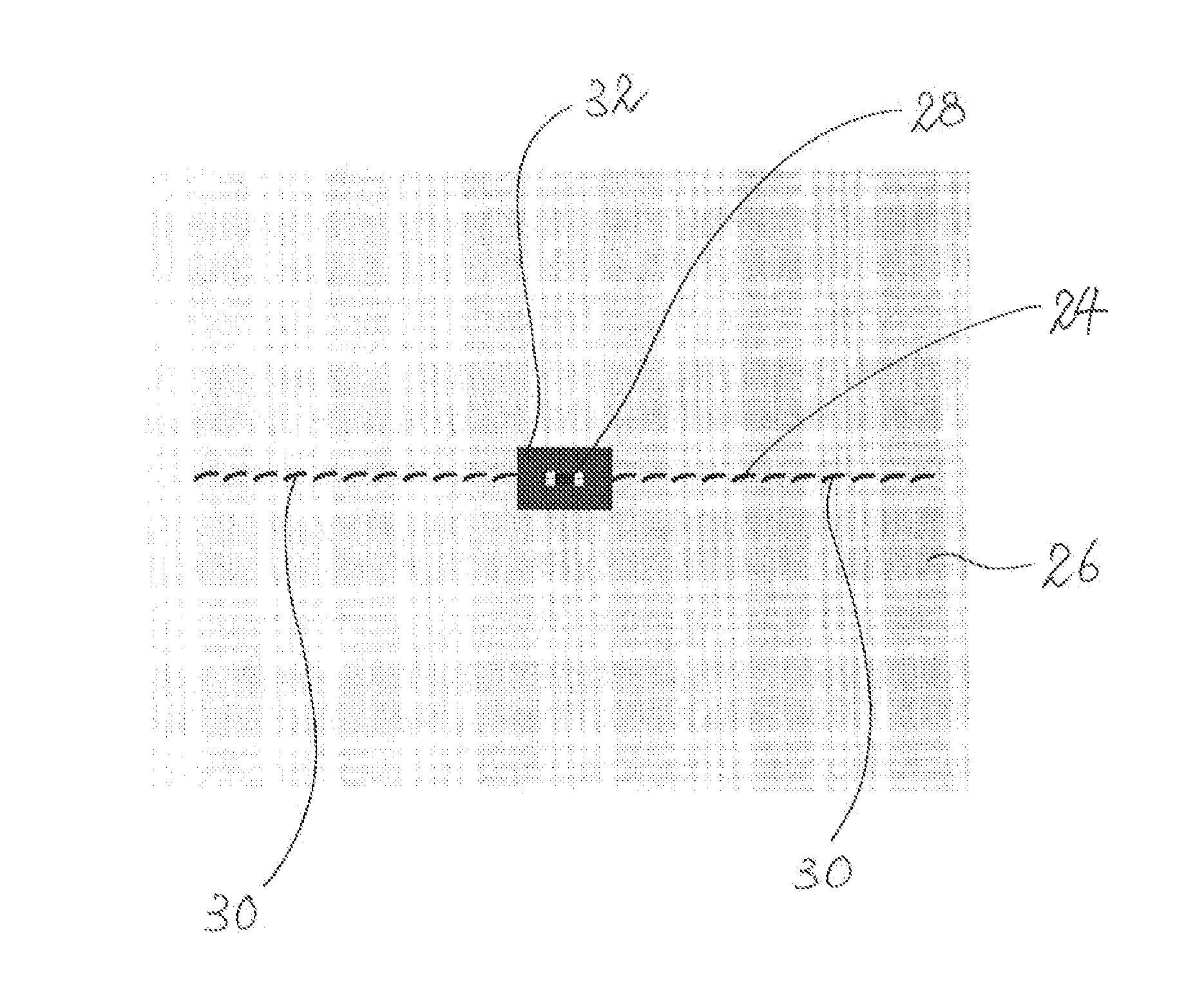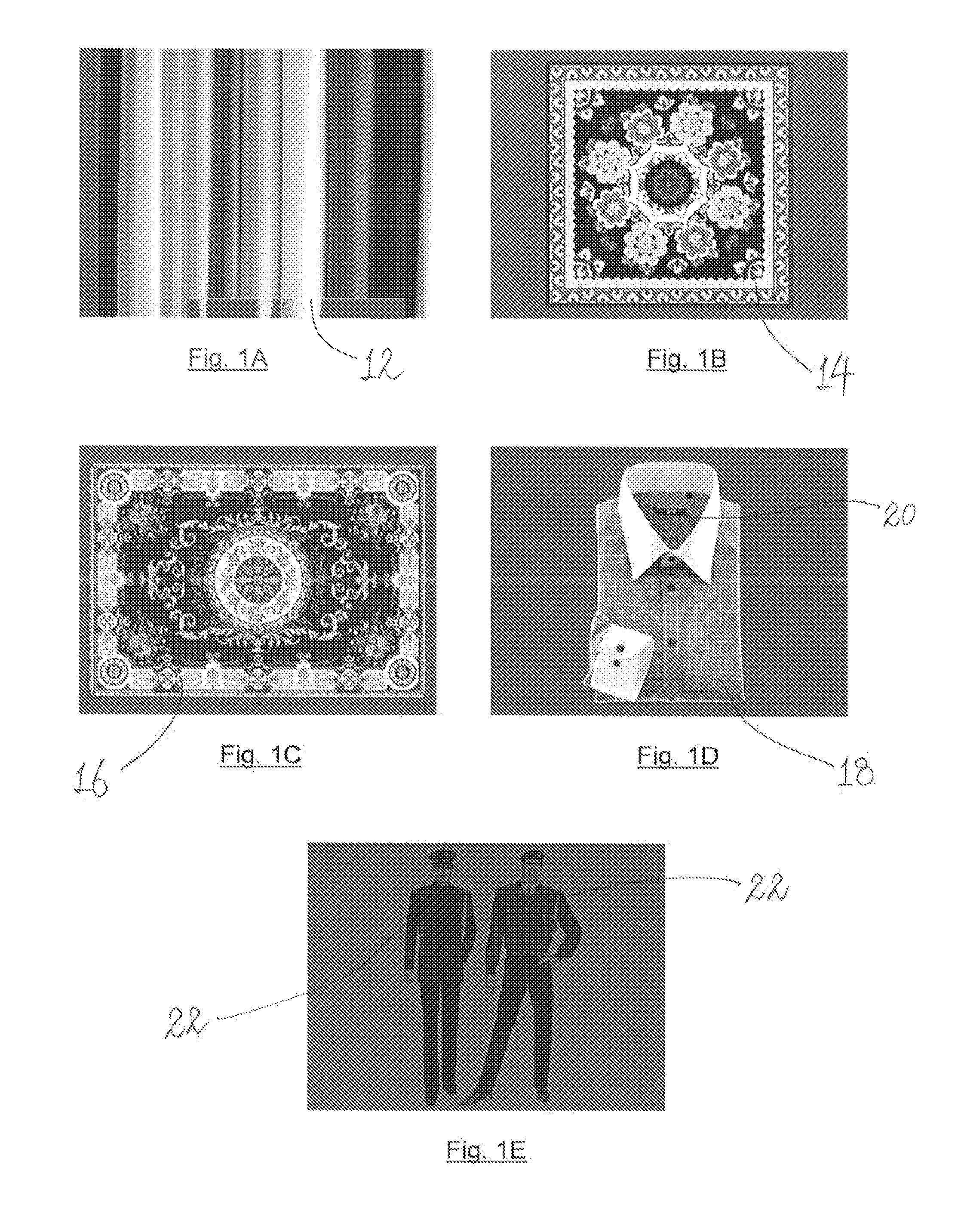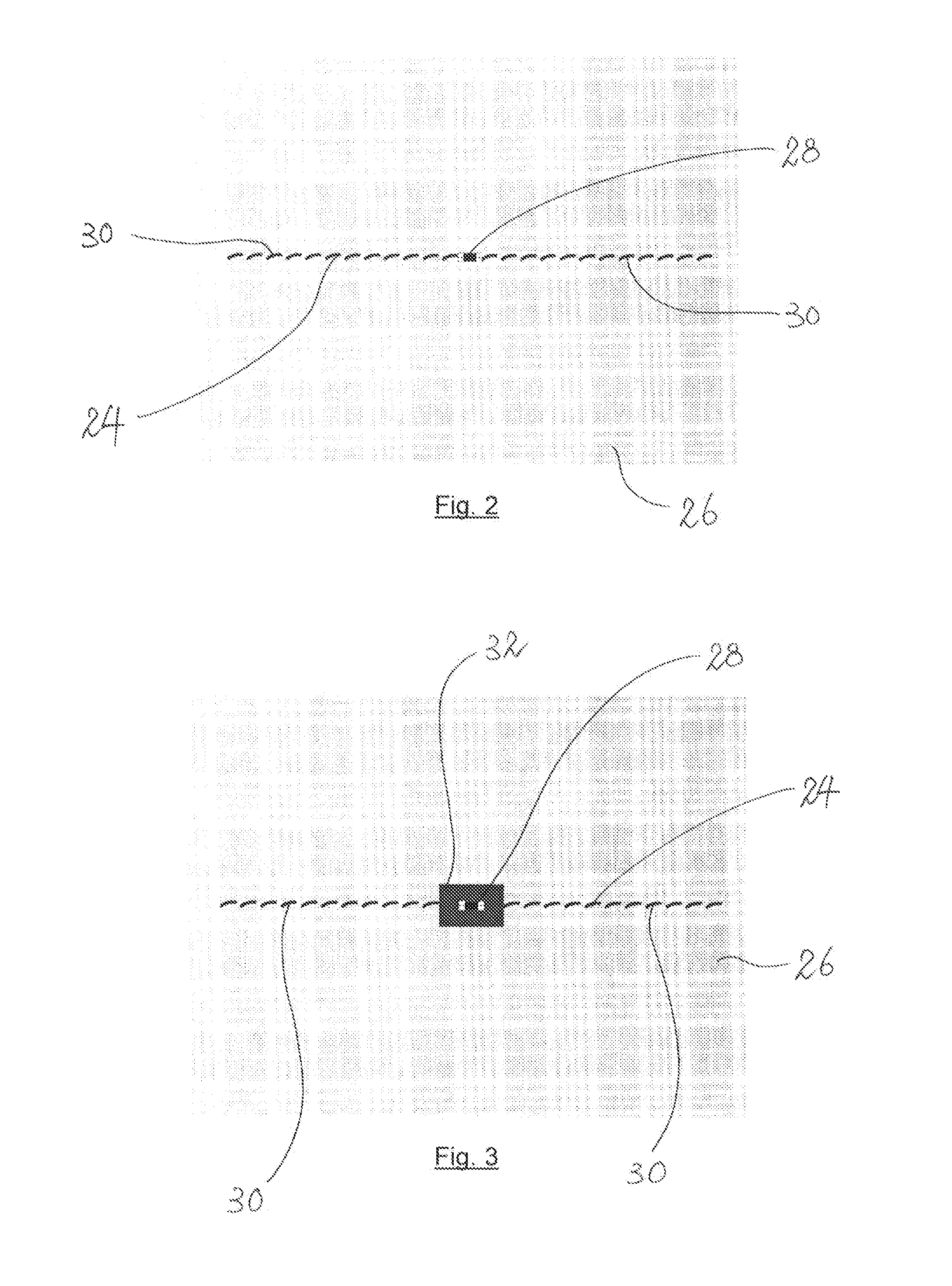Radio Frequency Identification (RFID) Tag
a radio frequency identification and tag technology, applied in the field of radio frequency identification (rfid) tags, can solve the problems of insufficient washing process, just applying an rfid tag to a price tag,
- Summary
- Abstract
- Description
- Claims
- Application Information
AI Technical Summary
Benefits of technology
Problems solved by technology
Method used
Image
Examples
Embodiment Construction
FIGS. 1A to 1E show various objects into or onto which a radio frequency identification (FRID) tag according to the present invention may be secured. FIG. 1A shows a piece of cloth 12 onto which such an RFID tag may be secured; FIG. 1B shows a table cloth 14 onto which such an RFID tag may be secured; FIG. 1C shows a carpet 16 onto which such an RFID tag may be secured; FIG. 1D shows a shirt 18 onto whose label 20 such an RFID tag may be secured; and FIG. 1E shows uniforms 22 onto or into which such an RFID tag may be secured. The RFID tag may also be sewn onto leather or other wearable materials.
An RFID tag 24 according to the present invention is shown in FIG. 2 as sewn onto a piece of cloth 26. The tag 24 is shown here as a passive RFID tag, although it should be understood that such may be a battery assisted passive RFID tag or an active RFID tag. The RFID tag 24 includes a flip chip integrated circuit (IC) 28 electrically connected with a pair of metalized threads 30, each form...
PUM
| Property | Measurement | Unit |
|---|---|---|
| diameters | aaaaa | aaaaa |
| hard | aaaaa | aaaaa |
| diameters | aaaaa | aaaaa |
Abstract
Description
Claims
Application Information
 Login to View More
Login to View More - R&D
- Intellectual Property
- Life Sciences
- Materials
- Tech Scout
- Unparalleled Data Quality
- Higher Quality Content
- 60% Fewer Hallucinations
Browse by: Latest US Patents, China's latest patents, Technical Efficacy Thesaurus, Application Domain, Technology Topic, Popular Technical Reports.
© 2025 PatSnap. All rights reserved.Legal|Privacy policy|Modern Slavery Act Transparency Statement|Sitemap|About US| Contact US: help@patsnap.com



